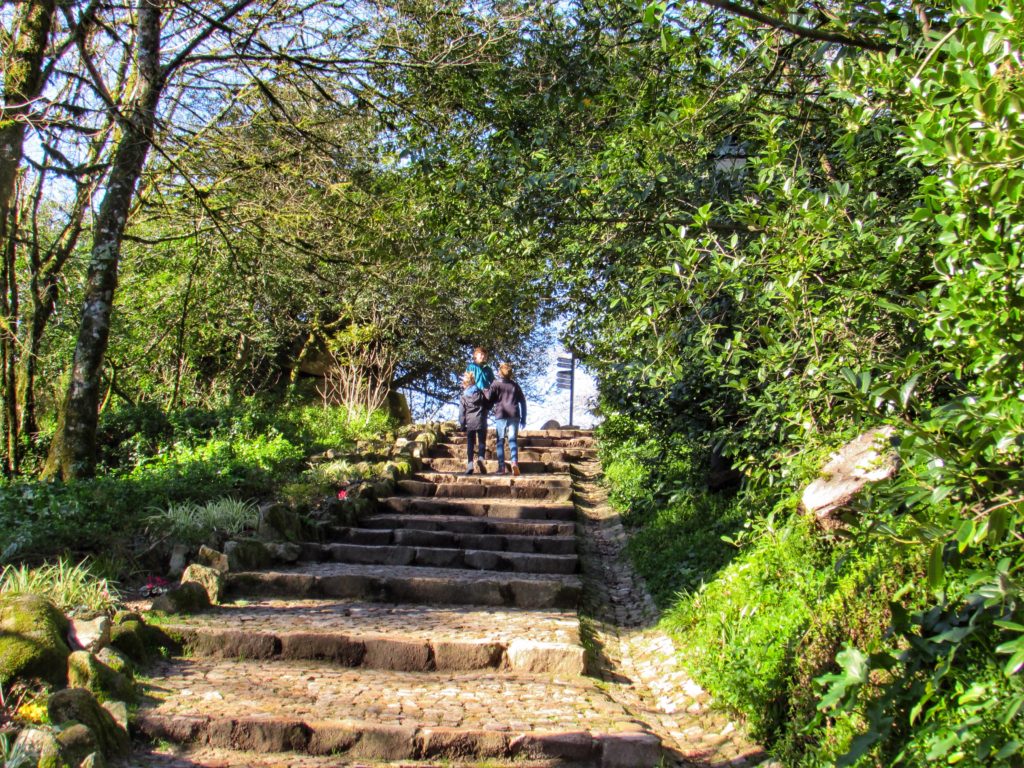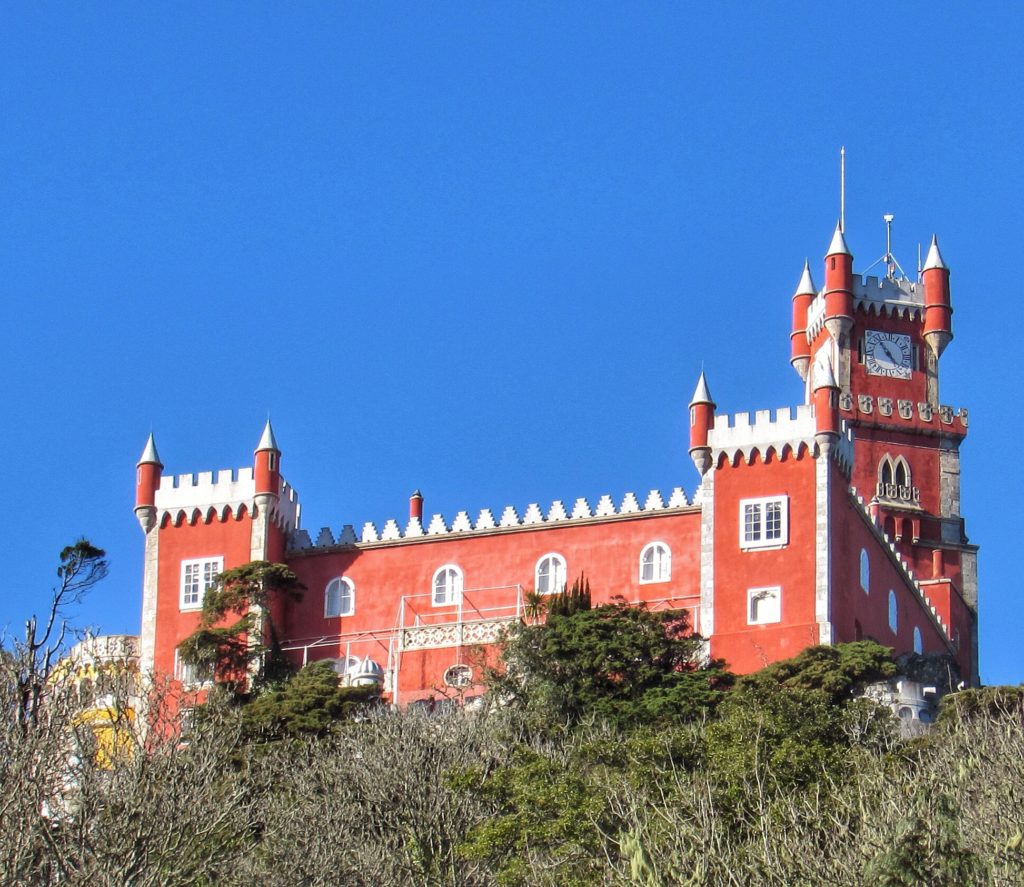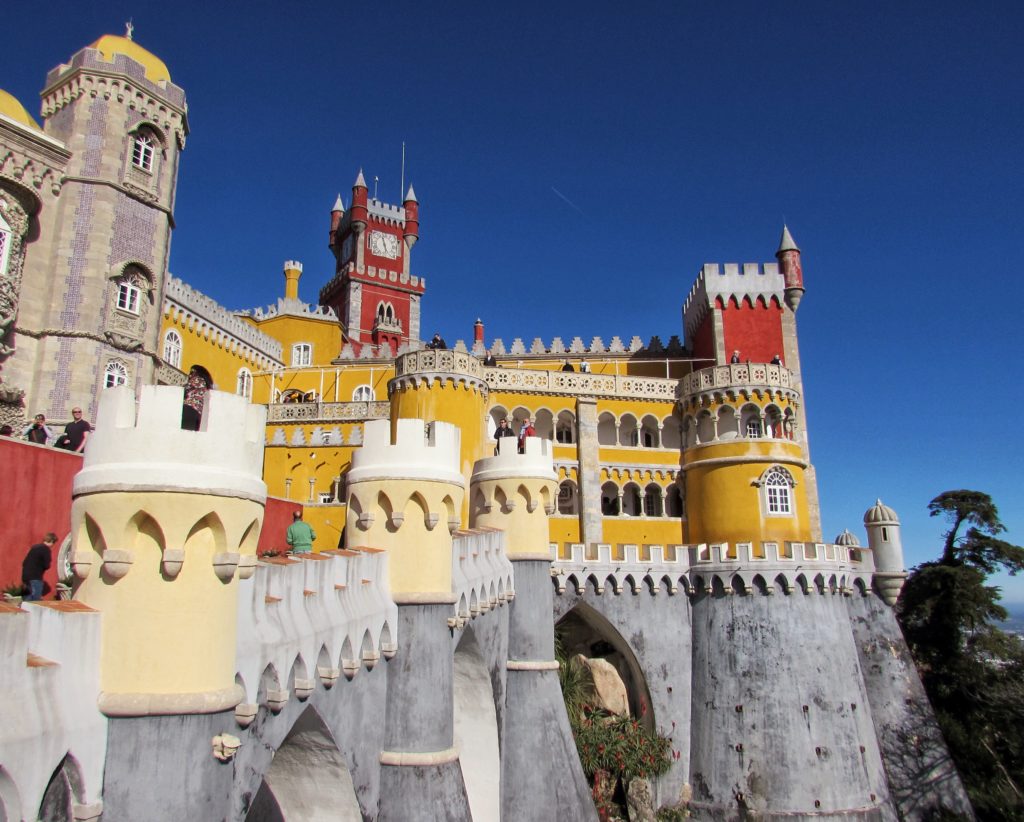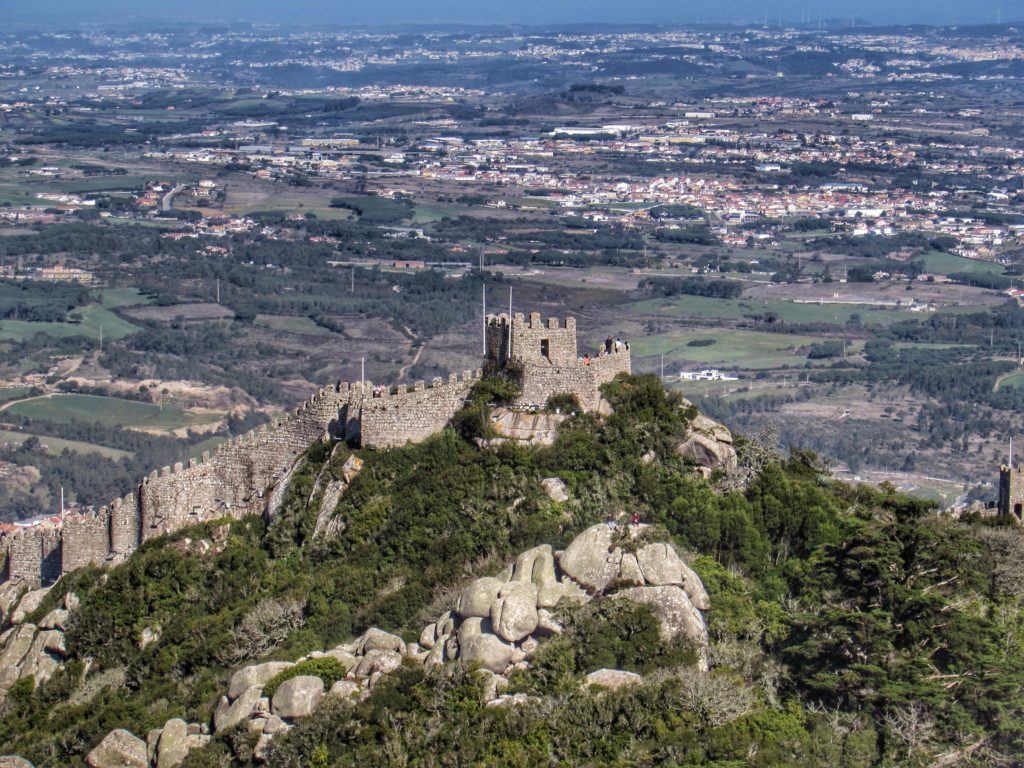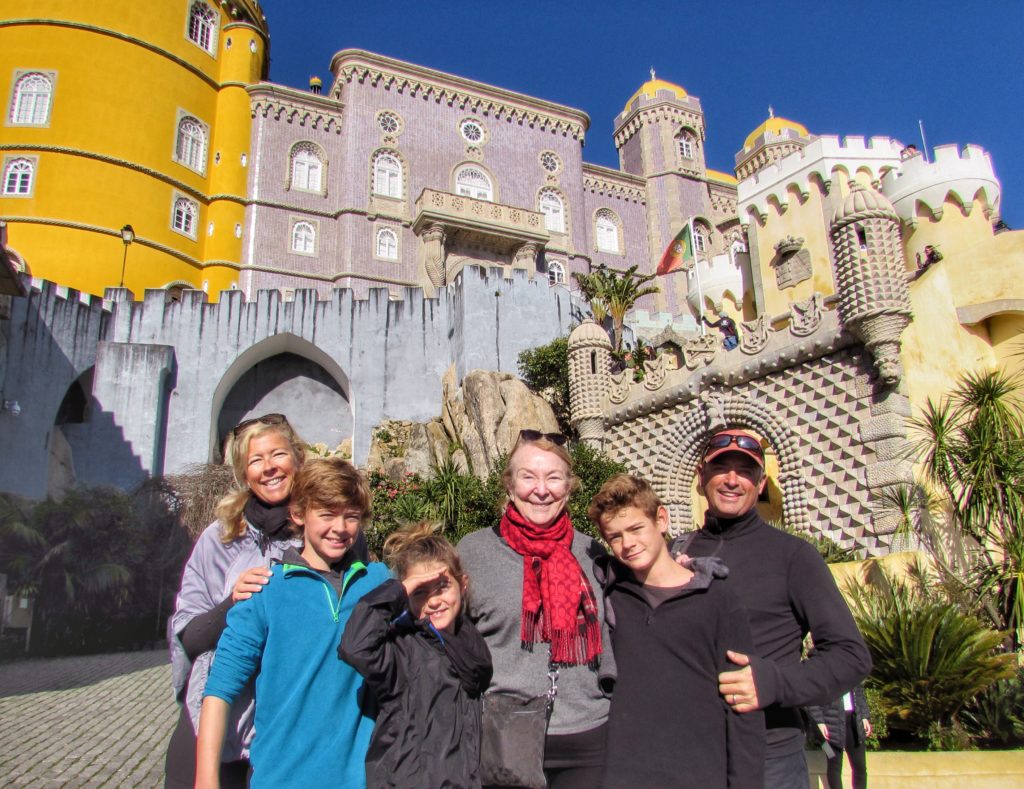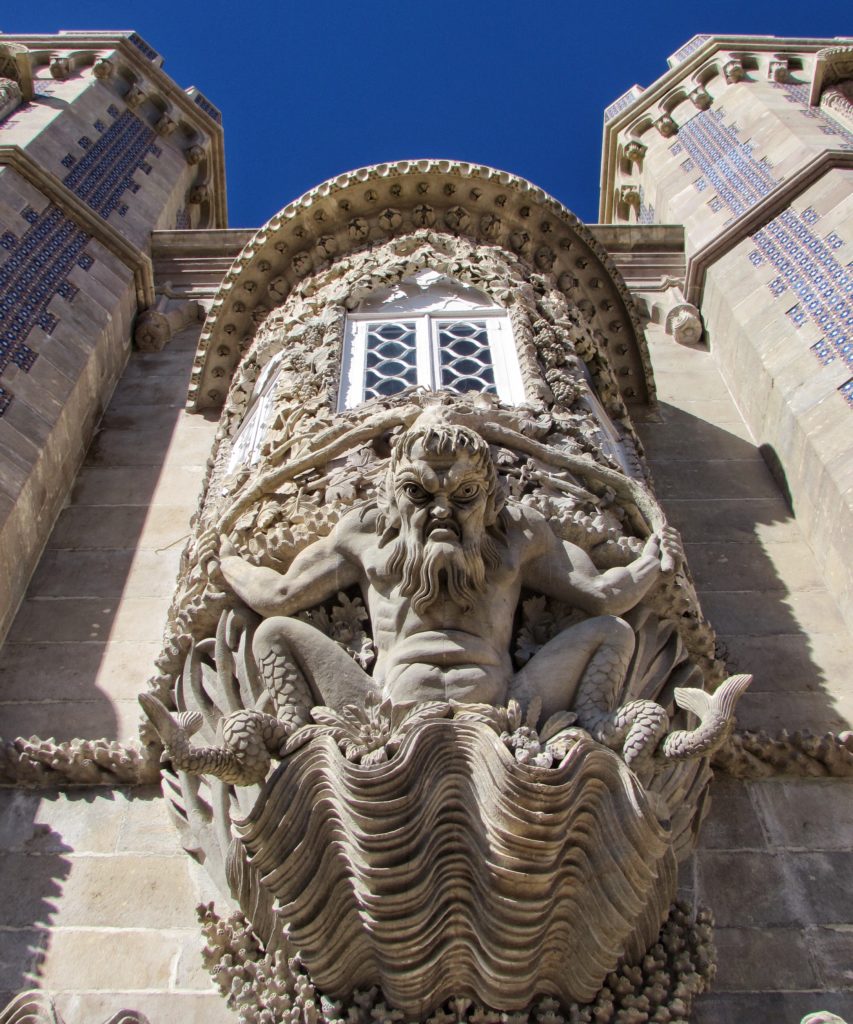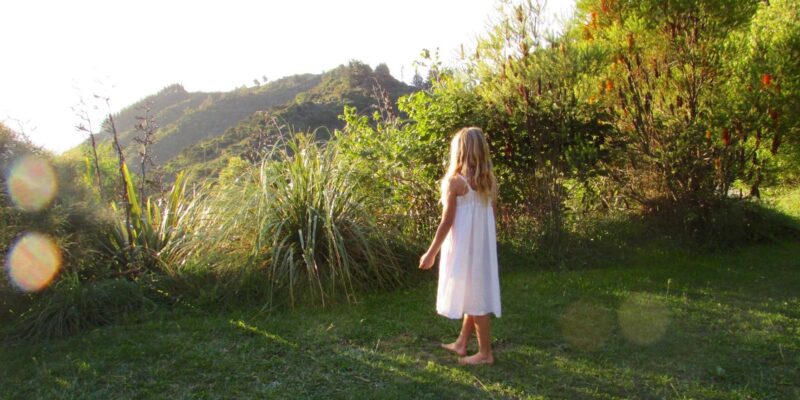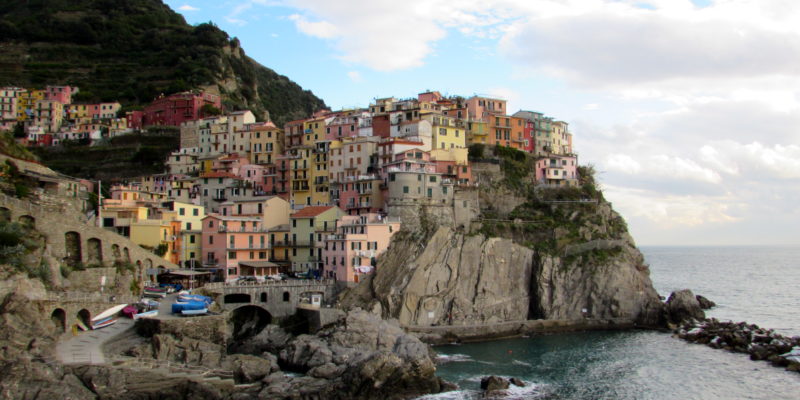Lo! Cintra’s glorious Eden intervenes
In variegated maze of mount and glen.
Ah me! what hand can pencil guide, or pen,
To follow half on which the eye dilates
Through views more dazzling unto mortal ken
Than those whereof such things the bard relates,
Who to the awe-struck world unlocked Elysium’s gates? – Lord Byron, Childe Harold’s Pilgrimage
The town of Sintra is less than half an hour from Lisbon and somehow a world away. It is the land of poets and canvases, castles and palaces, parks and mansions, dreams and fables. In other words, it is not to be missed. Somehow on our last visit to Sintra, in 2014 we missed it … And by it, I mean Pena Palace.
We have seen Neuschwanstein Castle in Germany, the Palace of Versaille in France, and Schonbrunn Palace in Austria but we were enveloped by the fantastical levity of Pena Palace.
Unlike the most famous castles and palaces in Europe, Pena Palace, the off-season is still easy to access by comparison. The line, in the freezing rain in Neuschwanstein Castle, was an estimated four-hour wait. To visit Versaille, we woke up at 5 am to get in line, on a Wednesday in April and we were not the first ones to arrive. At Schonbrunn Palace, we never made it past the grounds as the kids tired themselves in the extensive gardens before even making it to the Palace gates. We wouldn’t trade the effort to see such places and we welcomed the ease we felt last week visiting the palaces of Sintra. Without the struggle, the fairy tale started immediately. On a sunny Monday morning in February, we drove right to the gates of Pena Palace, bought our tickets and stepped into a beautiful story.
After his visit to Pena Palace in 1866, Hans Christen Andersen wrote, “The whole mountain road is a garden, a wonderful combination of nature and art, the most beautiful walk you can imagine”.
The German prince, Ferdinand II arrived in Portugal in the 1830s to marry the crown princess. He discovered the Serra di Sintra, 1700 feet above sea level, and found the ruins of a 16th-century monastery. He got a little carried away as his plans for a modest summer residence took flight. Somehow he commissioned something so surreal and yet grounded by the craggy cliffs upon which it holds court.
In 1994, the original colors were restored after years of fading to bare stone, pink for the former monastery, and ochre for the new palace.
It is no surprise that Pena Palace is heralded for its Romantic style. It is, however, the juxtaposition of that style with Moorish and Manueline, Chinese lacquered furniture and Turkish rugs adorned with Bohemian crystal, that truly sets it apart.
After wandering the Palace halls, the sun on the Queen’s terrace is blinding, as the piercing blue sky meets the sorbet colored spires and turrets. In the distance, the Moorish Castle hugs the neighboring ridge, and we have to blink to believe from the palace we see a castle!
Our fairytale couldn’t have come at a better time. With my mother visiting, we really wanted her to experience the ease and magic of Portugal. When a warm winter day revealed itself, we knew Pena Palace was the place.
Eclectic doesn’t seem strong enough to describe the sensory feast – perhaps seductive is a better word.
As we serpentined down the hill, leaving the palace and its woodland behind, we felt the magic follow us back into our day to day because we had, once again, seen evidence of what is possible … “Rocks in my path? I keep them all. With them, I shall build my castle.” – Nemo Nox
Today’s Tweetable: Pena Palace: One of The Seven Wonders of Portugal
